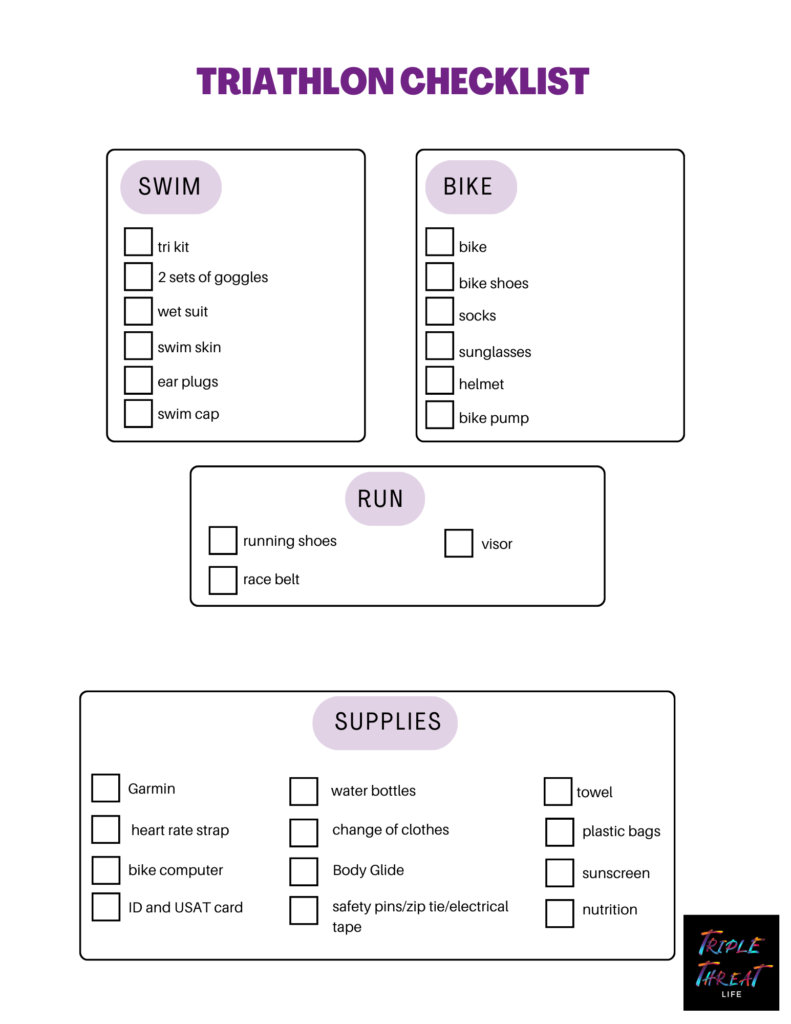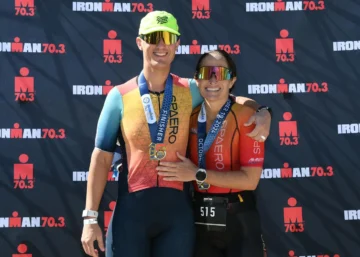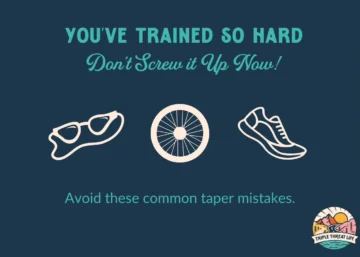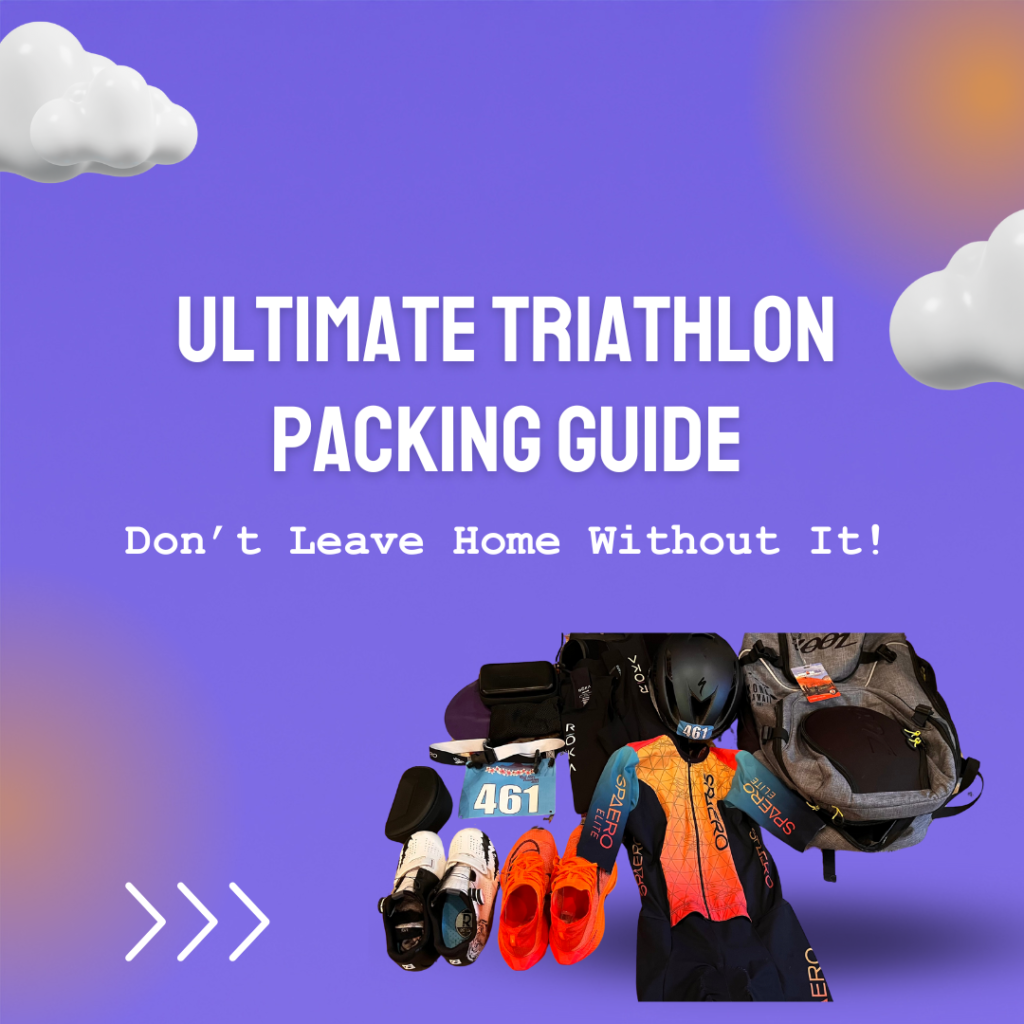
There’s nothing worse than getting to a race and discovering that you’ve left an important piece of gear at home… It happens to everyone, age groupers and pros alike, but there are steps you can take to prevent this from happening. All you need is a good triathlon packing checklist.
Anything you can do to be prepared ahead of time will help reduce anxiety during the already stressful experience that is race morning.
Read on to discover the ultimate triathlon packing guide with sections dedicated to gear and equipment, clothing, nutrition, documents, and more.
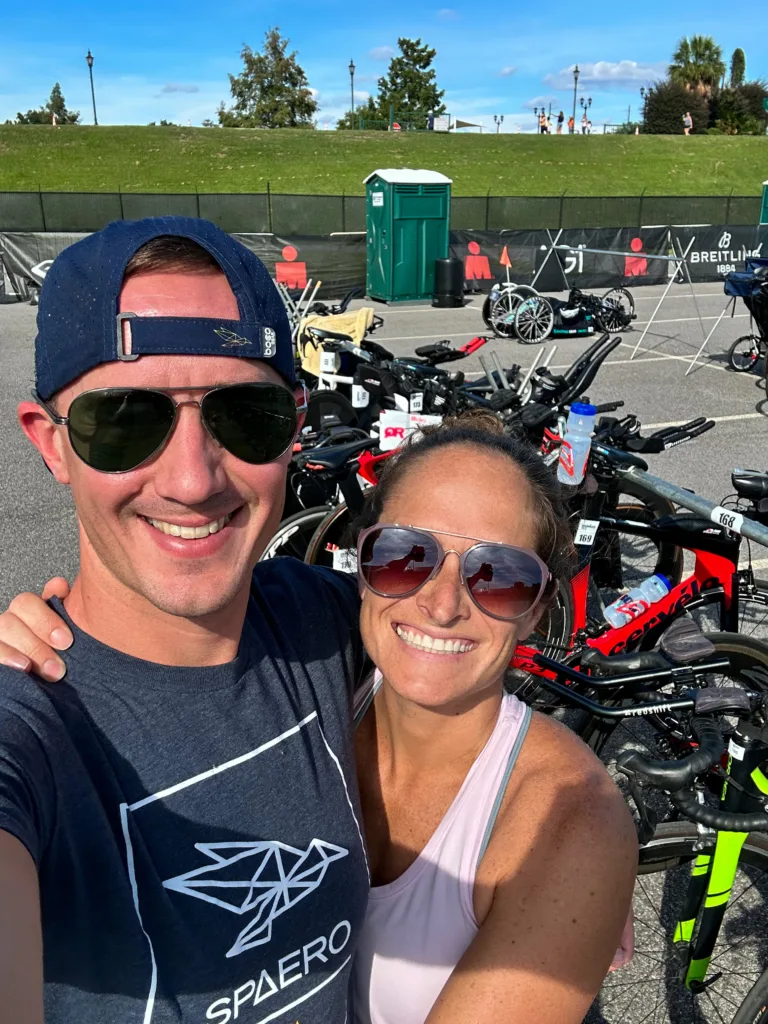
Before my first triathlon, my coach gave me his packing checklist- the one he’s used to pack for countless triathlons around the country for the past 30 years. I’ve made my own modifications over the years, but that basic checklist has seen me through countless sprint and Olympic races, six 70.3 races, and an Ironman.
Your own packing checklist will vary based on the length of triathlon you plan to compete in. For example, it takes more prep work for a 70.3 or Ironman than it does for a local sprint, but the essentials will be the same. Also, the list might change based on whether you’re driving or flying to an event and how long you plan to be there pre-race.
Swim- Bike- Run
When I’m packing for a triathlon, I get out my checklist and spread out my gear on the living room floor. Then, I run through the list, twice, to verify I have everything I need before I put it in my transition bag. We use this one from Zoot that has great wet and dry compartments and even holds your helmet.
Swim- wetsuit, swim skin, 2 sets of goggles, swim cap, earplugs
We always bring a wetsuit and a swim skin, just in case, because you never know what the water temperature will be on race day. If it’s not wetsuit legal, I always wear a swim skin, because it’s faster that wearing a trisuit alone. I always bring two pairs of goggles in case one gets damaged, as well as a swim cap, although the race will likely provide one. I wear earplugs, so that’s a must-have on my checklist. I use Mack’s clear, moldable, silicone earplugs you can get at your local pharmacy.
Bike- bike, helmet, cycling shoes, socks, sunglasses
Of course you need your bike, helmet, and cycling shoes, but I also add sunglasses and socks to this section. That’s because I like to pack in the order that I will use the items during a race. If I’m wearing socks, they go on during the bike leg, as well as my sunglasses.
Run- running shoes, race belt, visor/hat
For the run, you will need running shoes, a race belt to hold your number, and a visor or hat. A visor is great because you can flip it upside down on your head to hold ice that you can grab at aid stations. My husband prefers a backwards hat.
Some people like using elastic or “speed” laces in their shoes so they don’t have to tie their laces in transition. If that’s you, pack an extra pair. We like Caterpy as opposed to Lock Laces, because they aren’t as restrictive and have better adjustability.
NOTE: While you should do a few practice runs with elastic laces, it’s not a good idea to use them for every training run. That’s because your foot will move around more inside of the shoe, which can lead to blisters. Also, the increase in movement can lead to poor run economy, because your foot biomechanics change. Click here to read an article in Triathlete Magazine with input from my friend, Cody Angell, who owns St. Pete Running Co.
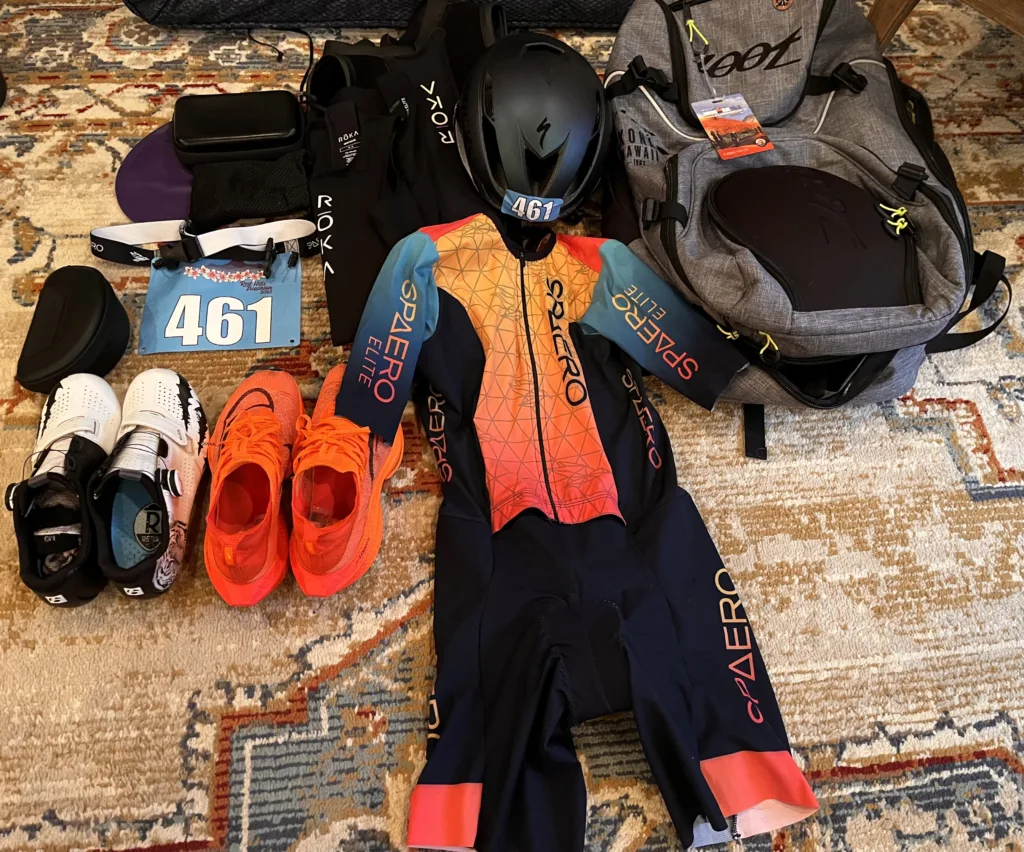
Gear and Equipment
Gear- heart rate strap, watch, bike computer, chargers, extra coin batteries
In addition to a heart rate strap and a watch, you might also have a bike computer. All these devices need charging, so pack the appropriate charging cables. Also, if you have a power meter on your bike, pack a few extra coin batteries. Speaking of charging, never leave home without your Di2 charger, if you have electronic shifting. We always plug our bikes in the day before a race, just in case.
Equipment- Bike pump, multitool, flat kit, chain lube, extra tube and CO2 cartridges
We bring our own bike pump, because we know exactly how it works. Also, we pump up our tires the night before the race, and keep an eye on predicted weather conditions. While there will be pumps in transition at larger races, there will be a line to use them and they don’t always work well. It can cause anxiety if you make a mistake and complete deflate your tire on race morning.
Carry a multitool for any last-minute adjustments, bring chain lube, and pack a flat kit with an extra tube and Co2 cartridges. Keep in mind that you can’t take CO2 cartridges on the plane. So if you’re flying to a race, you will need to purchase them when you arrive.
Nutrition and Hydration
Nutrition and Hydration- hydration mix, energy gels, salt tabs, small plastic bags, large plastic bags, aero bottle, bike bottles, and handheld bottle
For a 70.3 or Ironman, add to this list: post-race protein shake, pre-race meal ingredients, race morning breakfast, gallons of water, as well as any hydration to be used for training in the days before the race.
The plastic bags are for the bike and run. If you carry salt tabs, these tiny pill bags fit perfectly in the bento box on your bike. For the run, I prepare a large plastic bag that contains any gels and salt tabs I might need. When I get off the bike, I put on my running shoes, grab my hat and sunglasses, grab the plastic bag, and run out of transition. Then, I start putting things into my pockets as I’m moving. Anything you can do while you’re on the go saves time!
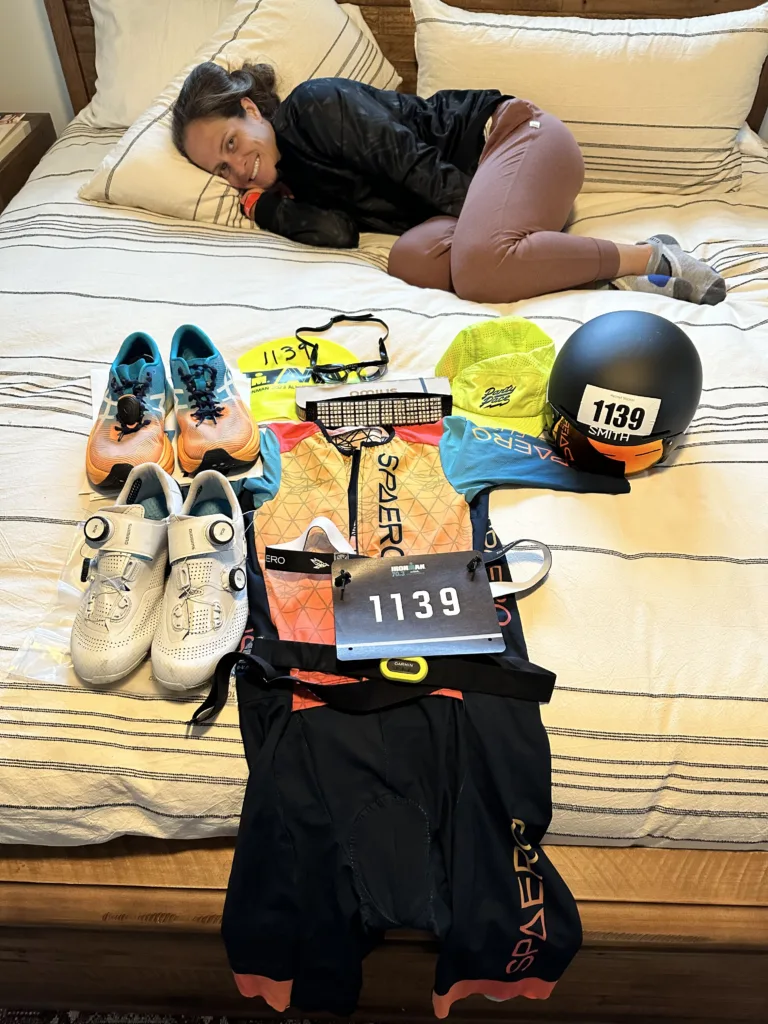
Clothing and Apparel
Clothing and Apparel- tri suit, sports bra, and post-race clothes
For a 70.3 or Ironman, add: training apparel like a swimsuit, cycling kit, and run clothes, as well as a pre-race hoodie and throwaway sandals. Also, consider any items that might relate to weather, such as arm warmers, a cycling vest, or gloves.
At an Ironman event, you may have to walk from transition to the swim start, so some people like to pack a pair of throwaway sandals and a hoodie if it’s a cold morning. I keep a pair of shorts, a t-shirt, and a sports bra in my transition bag so I can change out of my wet clothes post-race.
Documents, Self-Care, and Miscellaneous
Documents- Driver’s license or ID, medical alert band, USAT card, health insurance card, packet pick up details, and travel documents
For a 70.3 or Ironman, you will need your race registration email and QR code for athlete check-in. Also, pack any necessary travel documents like hotel reservation, rental car details, or directions. I like to print out the race week schedule so I have a hard copy. If you have any medical conditions, consider wearing an ID band like Road iD that contains your emergency contact info.
Self-Care- Foam roller, workout band, compression boots, compression socks, Band aids, pain reliever, KT tape, sunscreen, chamois cream, and Body Glide.
I have a pre-race stretch routine, so I always bring a foam roller. If you’re not allowed in the water before the swim, you can use a stretch band wrapped around a tree to do some exercises so you aren’t starting the race cold. Compression boots and socks are great for pre and post-race.
Other basic items like Band aids, pain reliever, and KT tape are helpful to include. Sunscreen and chamois cream are a must. We use Zealios. I applied it once before the swim at Ironman Florida and didn’t reapply the rest of the day! Body Glide goes on your neck, wrists, and ankles for easy wetsuit removal.
Miscellaneous- zip ties, rubber bands, safety pins, transition towel, packing tape, permanent marker, index card
Zip ties are essential for DIY repairs on the fly, like fixing a broken watch strap. If you attach your shoes to your bike for a flying mount, bring extra rubber bands. I always secure my timing chip with a small safety pin, because Velcro can fail.
You need a transition towel to place all your gear on, underneath your bike. A permanent marker can be used for body marking and also to mark special needs bags at an Ironman. While they will provide you with race number stickers, they often fall off. So, I always write my number on an index card and use clear packing tape to affix it to my gear bags, just in case.
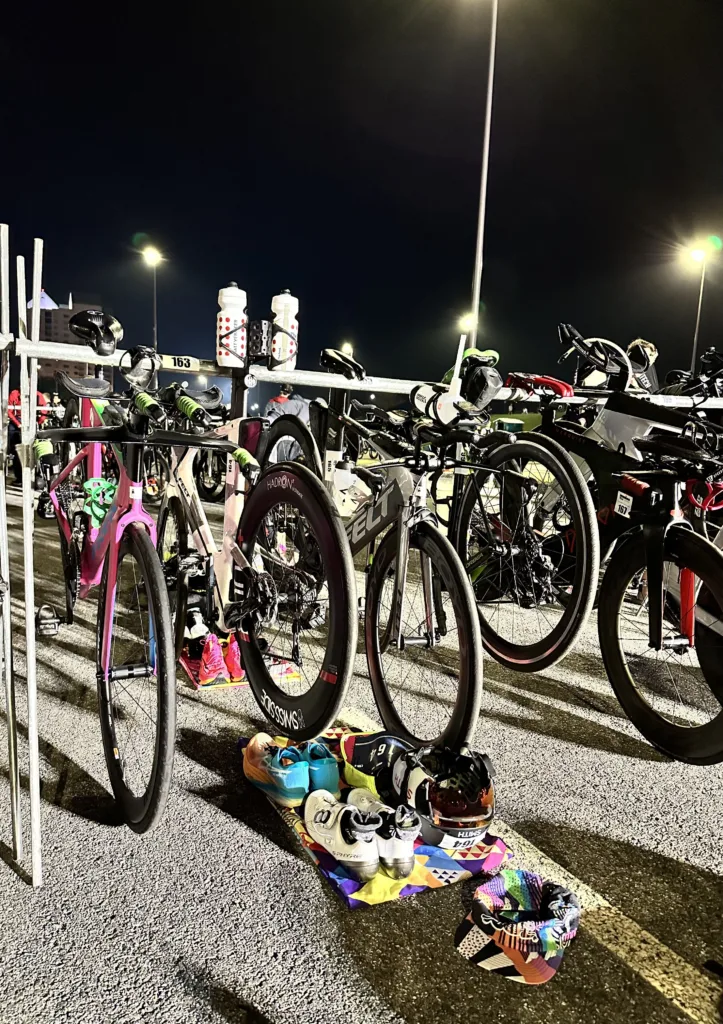
Now that you have everything packed, you’re one step closer to race day! Keep in mind that all of these items won’t go in your transition bag. In that bag you should only pack what you need on race morning.
Click here to download a PDF of my Triathlon Packing Checklist.
